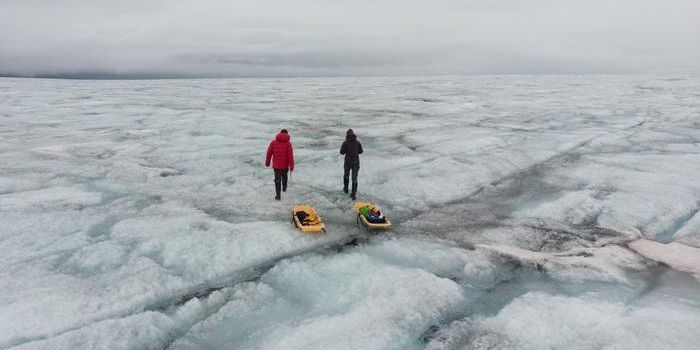Ancient Americans migrated via the Bering Land Bridge 35,000 years ago
The Bering Land Bridge has been an important piece of the puzzle of ancient human migration. It’s relatively well understood that humans probably migrated from the Eastern Hemisphere to the Western Hemisphere via this land bridge. But, new research published in the Proceedings of the National Academy of Sciences changes the timeline of events.
Contemporary understanding suggests that North America has been inhabited by humans for about 16,500 years (though early theories for how humans got to North America from the 16th century suggest everything from Atlantis as the origin of human life in the Americas to inhabitants forming from mud). Voyages by Dutch explorer Vitus Bering in 1724 and 1741 confirmed that there was land—and people—on the other side of Siberia; this was confirmed by an expedition in 1778 led by English explorer James Cook. Almost 200 years later, in the 1920s, scientists began trying to study exactly how people got to North America, finding that Beringia (the land and sea stretching from modern-day Russia to Canada) might hold the clues.
As such, it is well understood that humans likely migrated over the Bering Land Bridge to get to the Western Hemisphere. New research led by Jesse Farmer from Princeton University found that the Bering Land Bridge probably emerged about 35,700 years ago, which would have been less than 10,000 years before the height of the last ice age. This means that the growth of ice sheets—and the drop in sea level—happened more quickly and later in the glacial cycle than previously thought.
Sea levels across the globe tend to drop during an ice age because the Earth’s water gets trapped in the ice sheets. During the last ice age (known to scientists as the Last Glacial Maximum), ice sheets would have covered North America, and subsequently, there would have been lower sea levels. These lower sea levels would have left land exposed—land like Beringia. Then, as the Earth warmed and the ice sheets melted, the Bering Strait again became flooded, likely around 13,000 to 11,000 years ago.
Methods employed in the study include an analysis of nitrogen isotopes in seafloor sediments, which helped to determine when the Bering Strait was flooded during the past 46,000 years. When the strait was open, water from the Pacific Ocean flowed into the Arctic Ocean. The analysis was completed using measurements from nitrogen isotope ratios found in the remains of marine plankton that were preserved in sediment cores in the seafloor. The difference in nitrogen composition between the Pacific and Arctic waters is significant, and therefore the researchers were able to identify a specific nitrogen isotope signature, thereby creating models for when ice sheets formed and melted.
The findings from this new study help to pin down the timing of human (and other faunal) migration, suggesting that the Bering Land Bridge formed about 35,000 years ago and remained accessible until it flooded with melting ice sheets around 13,000 years ago. This, combined with archaeological evidence dating human occupation, suggests that humans began migrating across the Bering Land Bridge from Siberia to North America almost as soon as the land became exposed and allowed for passage.
Sources: Proceedings of the National Academy of Sciences, National Park Service (History of the Bering Land Bridge Theory), National Geographic, National Park Service (Beringia), UC Santa Cruz Newscenter









